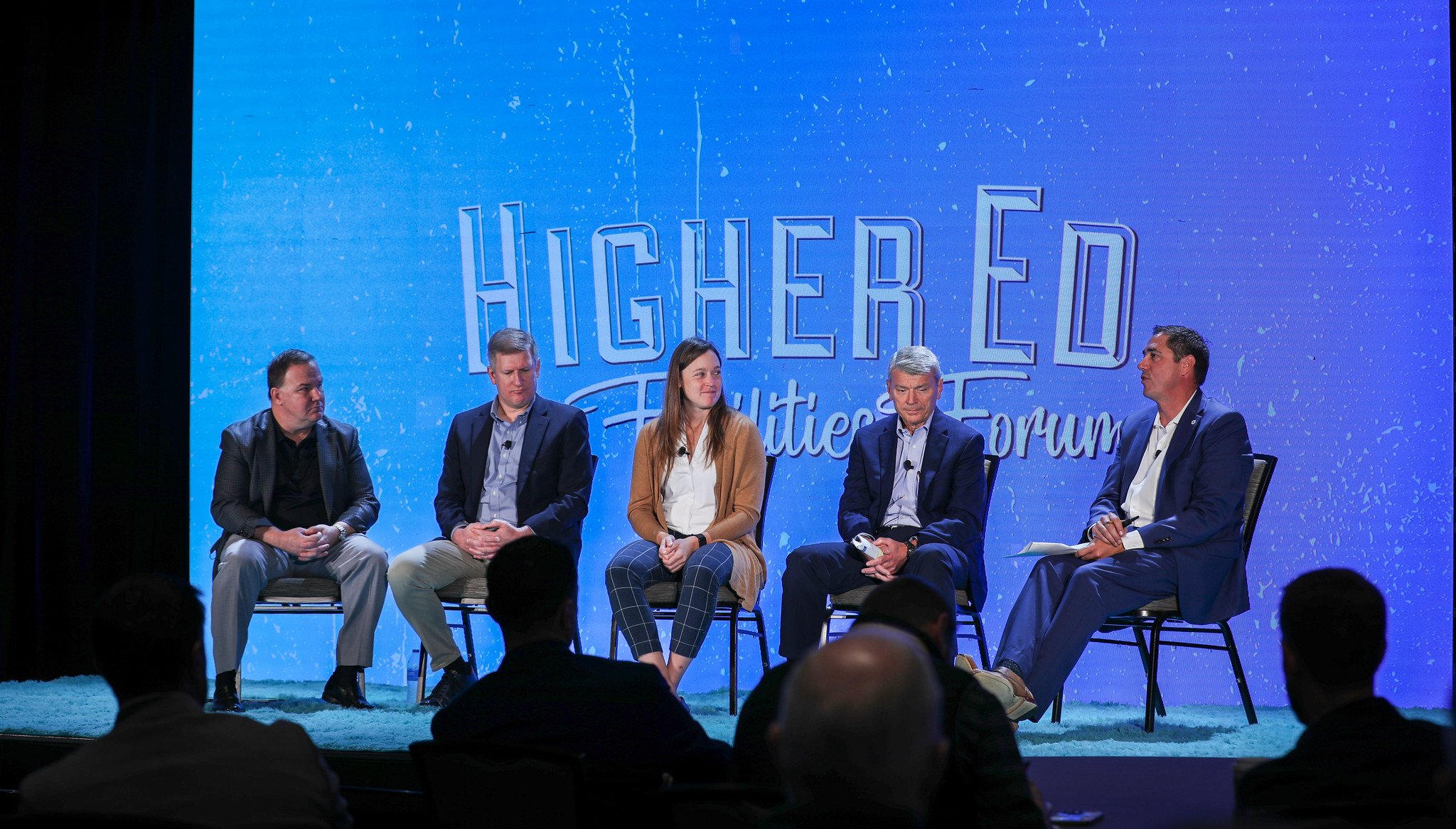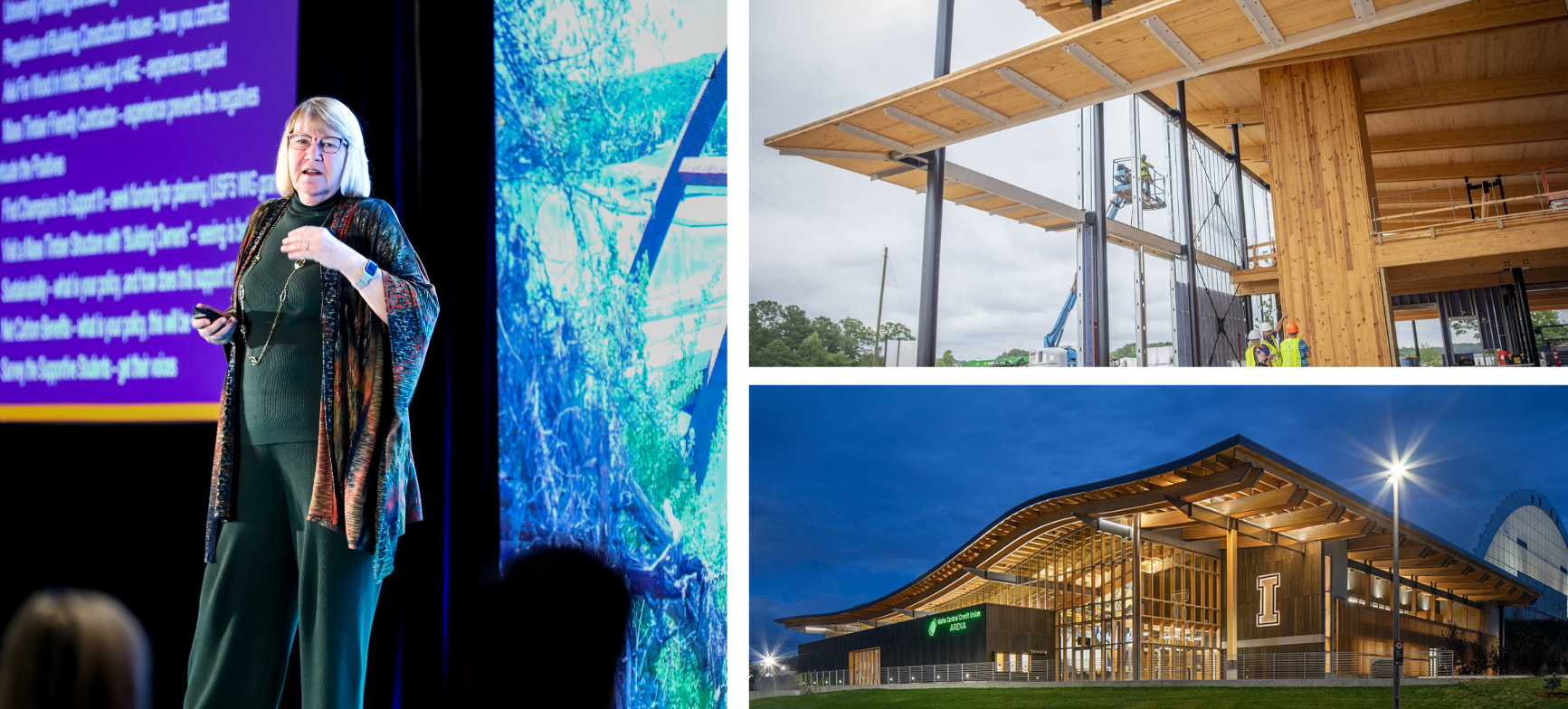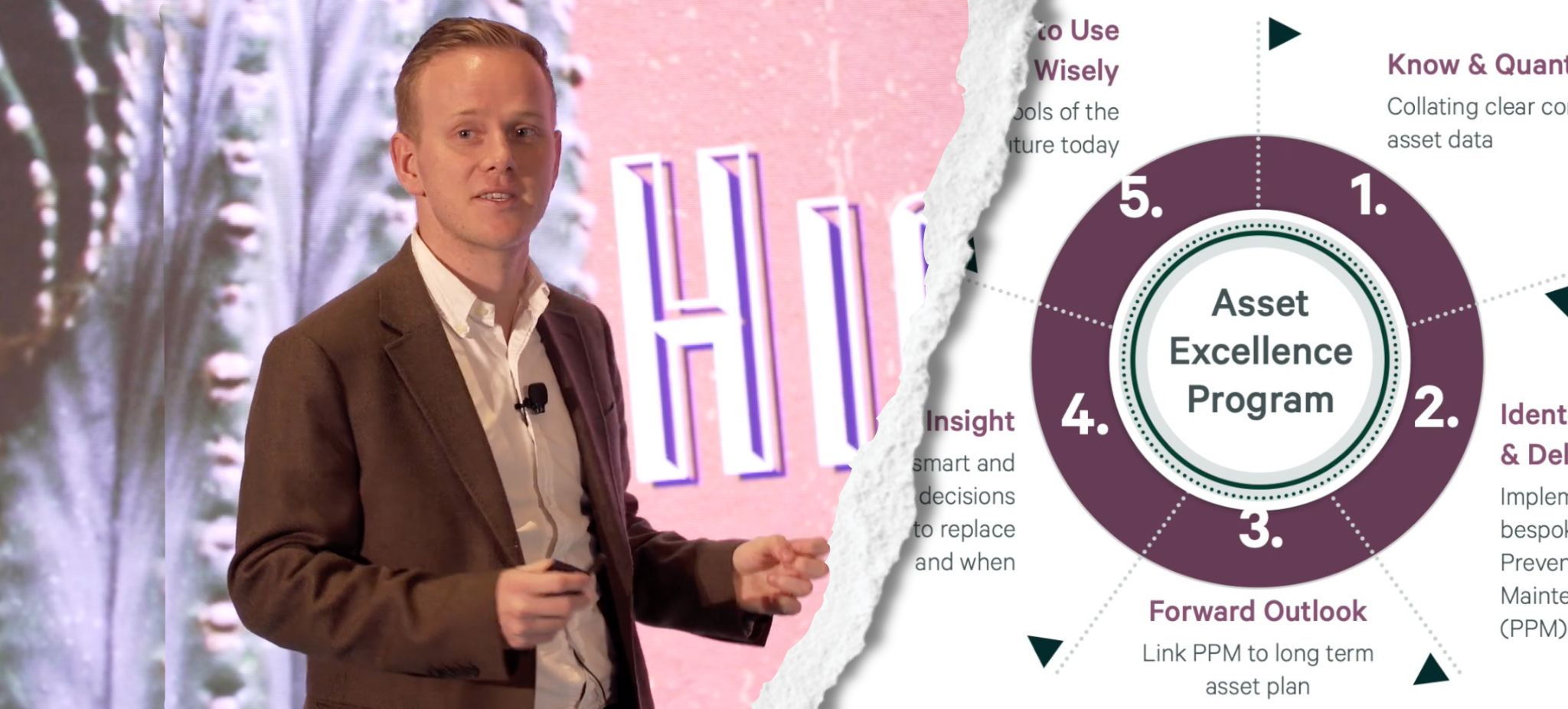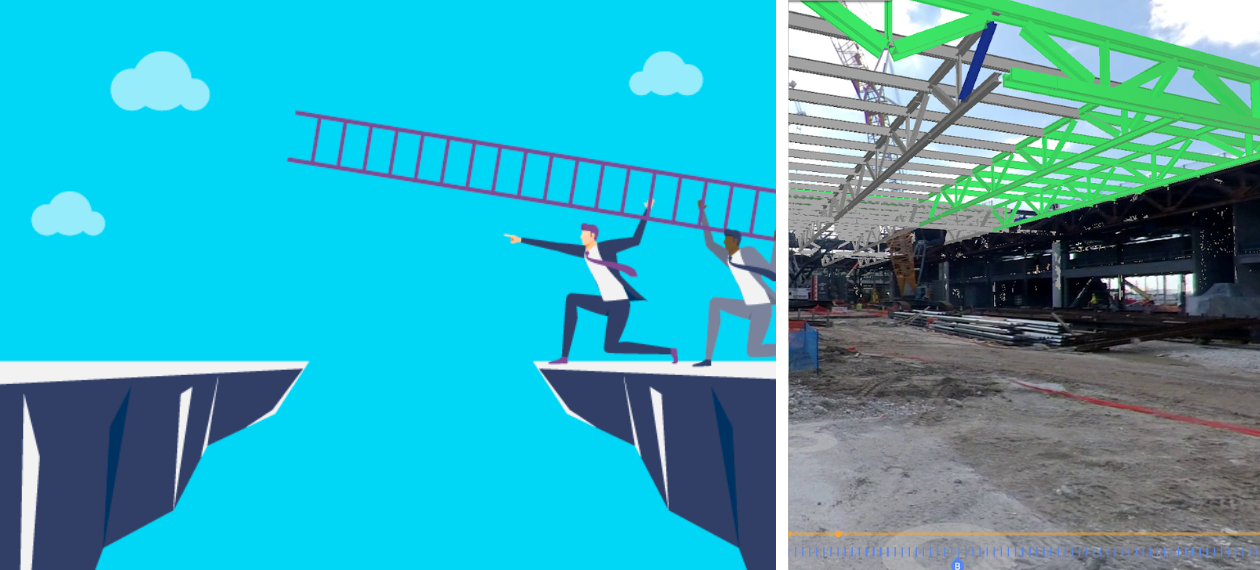Like many industries, facilities management is impacted by the Baby Boomer retirement wave. In fact, unique industry factors make this issue even more critical. While the need to recruit the next generation of talent is top-of-mind, an equally important issue--the retainment and development of employees-- is at risk of being overlooked.
For facilities organizations to be truly future-ready, an equal emphasis must be given to creating a positive culture of leadership and growth for employees--which is a recruitment tool in itself.
To learn more, we reached out to two thought leaders in this area: Chris Kopach, AVP of Facilities Management at the University of Arizona, and Dr. Bruce Meyer, VP of Capital Planning at Bowling Green University. We discussed best practices and found that five requirements are crucial for fostering a culture of leadership...
#1- Remind Your Team of the “Why” Behind Their Work.
At UA, Kopach recently received an uplifting email. When a ‘72 alum visited the campus with well-traveled friends who have seen universities all over the world, they remarked they'd never seen such a well-maintained campus.
According to Kopach, that's a huge credit to his team--and it's absolutely vital to pass these stories on to your staff routinely. The key to engaging employees (and especially purpose-driven millennials) is to consistently remind them of the importance of what they're doing, which is creating an environment for student success. In the day-to-day grind, it’s all too easy to get lost in the weeds and lose focus on the “why.”
“Every position is vital to the university,” Kopach said. “Custodians aren't just cleaning, they're preventing the spread of germs. Electricians aren’t just providing lighting, they’re allowing the university to shine when our games are on TV."
"The facilities staff creates an environment that makes parents say, ‘That's where I want to send my child.’”
According to Kopach, facilities management is an incredibly diverse, rewarding industry that presents the unique opportunity to be technical, strategic, creative, customer-service oriented, and business-minded all at once.
To spread awareness of the opportunities facilities management offers, you have to start internally by reminding your staff of the greater purpose.
#2- Manage Expectations Proactively.
"Expectations are the root of all disappointment" isn’t a phrase limited to our personal relationships. Often, expectations tend to go unverbalized and unwritten in the workplace, which leads to the opposite of job satisfaction.
Consistent, two-way communication is essential to combat this issue. Kopach holds a private "Expectation Meeting" with each potential hire. It's not a one-off meeting, either. Six months down the road, he meets with them to assess if expectations are being met on both ends.
In addition, he holds "Coffee with AVP" meetings seven times a month, where he chats with 40 employees at a time.
"I wish I could start my day engaging with all 600 employees for 10 minutes. Obviously, it's not feasible,” he said. “With such a large workforce, it's like a puzzle. Take the time to get to know your staff and ask them what their desires are. Ask them how everything is going and where they see themselves in the future.”
According to Dr. Bruce Meyer, you can’t expect your staff to improve if you don’t provide honest feedback. Before addressing weaknesses, your employees should already understand that you're proud to have them on your team because you regularly accentuate their strengths.
"You can’t evaluate employees just on the end game. You have to evaluate them on how they got to the end game. Things may have been done on time and on budget, which is great, but what did they do from inception of the project to completion? Were there things that could have been handled better?" Dr. Meyer said. “Be clear and consistent with your expectations, let people know you believe in them, and watch them grow.”
#3: Turn Your Staff into a Team: Get to (Really) Know Each Other.
“Our goal is to be one of the best FM departments in the country,” Kopach said. “I can’t do that alone; everyone needs to buy in and feel valued and respected.”
At UA, the golden rule prevails; there is zero tolerance for disrespect despite the inevitable frustrations that arise. The best way of fostering a culture of true respect is by getting to really know each other. At one of the first “Coffee Talks with the AVP” that Kopach hosted, he had everyone introduce themselves.
“One employee said to the woman next to him, “I’ve said ‘hi’ to you for 18 years and I’ve never really met you.’ That can’t happen. If we want a great team, we have to know each other. We like to say we are a business family.”

Physical proximity can also contribute to a closer team. At Bowling Green, Dr. Meyer’s office allows him to walk by people’s desks and ask how they’re doing. He’s currently moving his management team to be closer to the help desk, so they can be more connected.
Other ideas for fostering a closer, more harmonious team include…
- Participate in a unique activity, such as an Escape Room or scavenger hunt. Besides being a fun refresh from the daily routine, it’s a great way to gain insights into the way different members of the group approach challenges.
- Vary group assignments as possible. Ensure that different individuals get the chance to work closely together on projects or tasks.
- Reward the team as a whole, rather than only giving individual “thank you’s” or bonuses. Motivate everyone by taking your team out for a celebratory lunch for a job well-done.
- Volunteer together. It’s a rewarding experience all-around that reinvigorates the team and creates feelings of goodwill. Ask employees if there are any organizations they’re affiliated with for ideas.
- Get active as a team! Physical activity is the best way to relieve stress, release feel-good endorphins, and simply have fun. Aim for an inclusive activity (read: don’t attempt to run a marathon!) so everyone can participate.
#4- Provide Multiple Opportunities for Growth.
In a field where people often stay in their positions for decades, opportunities for constant development are the secret to fighting stagnation.
“It’s my job to eliminate barriers and give my team the tools and training they need so they stay energized,” Kopach said. He does so by putting employees through the Dale Carnegie Leadership Course and Toastmasters training to improve their skills. For young recruits, an Apprenticeship Program provides four years of one-on-one training with a salary and benefits included. And the custodial staff are given the opportunity to grow into a trades position.
With so many managers within the department, Kopach stresses the importance of creating uniformity and speaking the same language. To keep everyone on the same page, the team completes the APPA Leadership Academy (based on The Seven Habits of Effective Leaders).
Succession planning is another crucial aspect of being an effective and strategic leader. Competing with the high-paying private sector fcor building control operators is one challenge for the University of Arizona. To address this issue, they're grooming their own staff and bringing in electronic technicians, then training them for this position.
“We’re going through a major transformation with the numbers of employees leaving. My theme this year is harnessing and transferring this wealth of knowledge from senior members to younger professionals,” Kopach shared.
Kopach looks ahead at every position and asks: Who within our organization has the skill set that we can start grooming? He then sets up weekly meetings between these employees to start reviewing the campus. Rotational leadership development through APPA is another big help. Kopach identifies leaders and “gives them an opportunity to pick up projects in different areas and run with them while we provide constant feedback.”
At Bowling Green, Dr. Meyer is a big proponent of assigning stretch projects to tap into his team’s greater potential.
“If you have an individual working in the electrical group, give them projects outside their comfort zone. See how they handle those meetings and interactions for a sense of their strengths and what needs to be worked on,” he said. “I don’t expect anyone to ever be perfect, but I do insist on getting better each day.”
This means that you as a leader must actively commit to your team’s growth. For example, Dr. Meyer brought a trainer to the university so employees could work towards a degree during normal working hours.
“It shows your team that it is really important to us and the university, and that helps with the buy-in from your employees,” Dr. Meyer said. “You’ve got to walk the walk.”
#5- Lead By Example.
As a leader, your attitude matters the most; your employees are looking to you to model their attitudes. All successful leaders empower each team member to see the importance of their role in the large mission of the organization.
"Your actions set the tone of what is expected, and you need to take care of your staff first and foremost,” Kopach said.

According to Kopach, the best leaders publicly praise employees when they're doing a great job. If there's an issue that needs to be addressed, it should be done in private with respect.
As the facilities field continues to evolve, it’s essential to provide the tools for your staff to stay on top of the transformation and remain engaged. For more on how to create a culture of leadership in facilities management, join us at the Higher Ed Facilities Forum, April 15-17 in the Woodlands, TX!

Posted by
Join us at HEFF!
An interactive retreat for facilities leaders at the nation's top colleges and universities.
Nov 10-12, 2024 | Tempe, AZ
Learn More









Comments